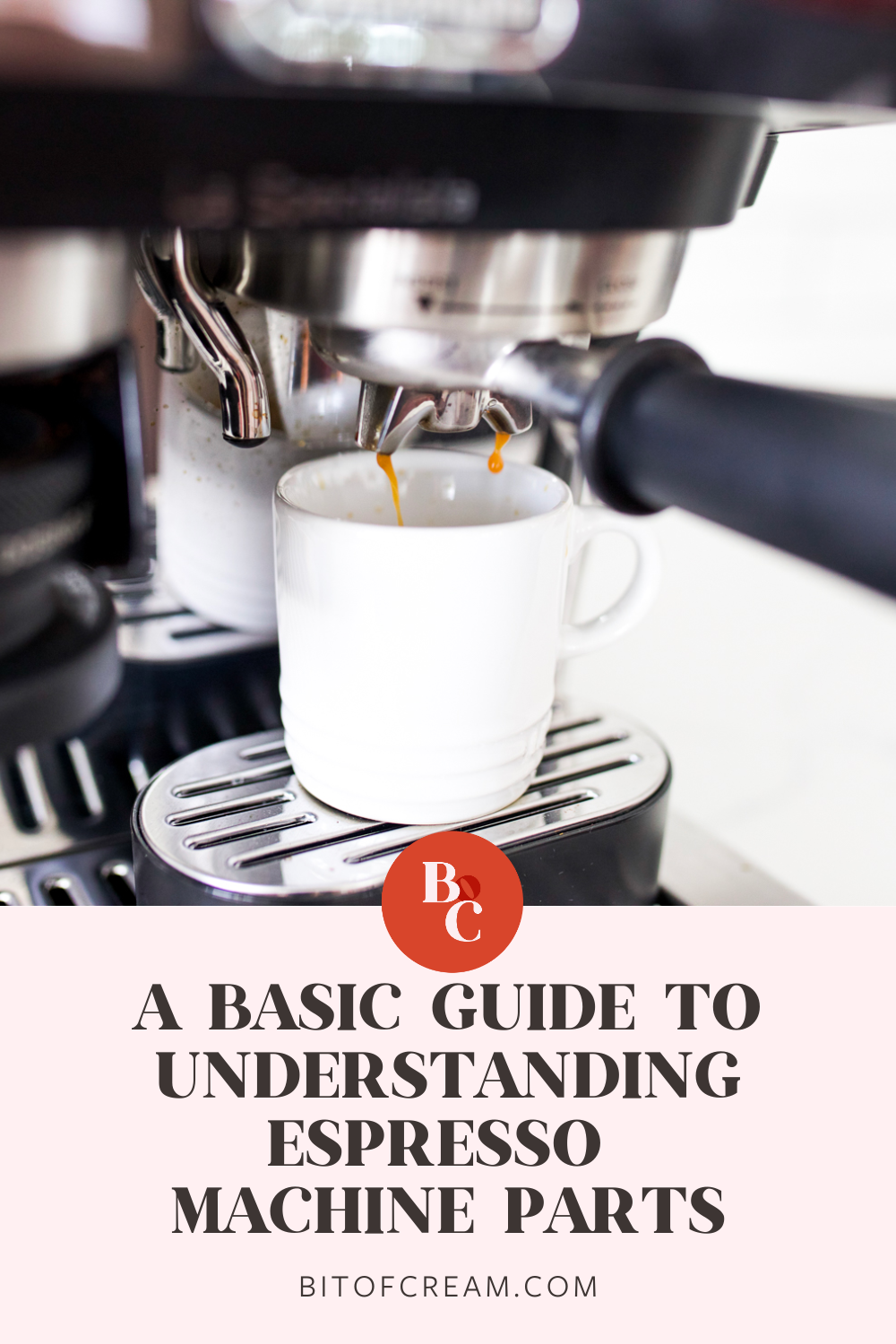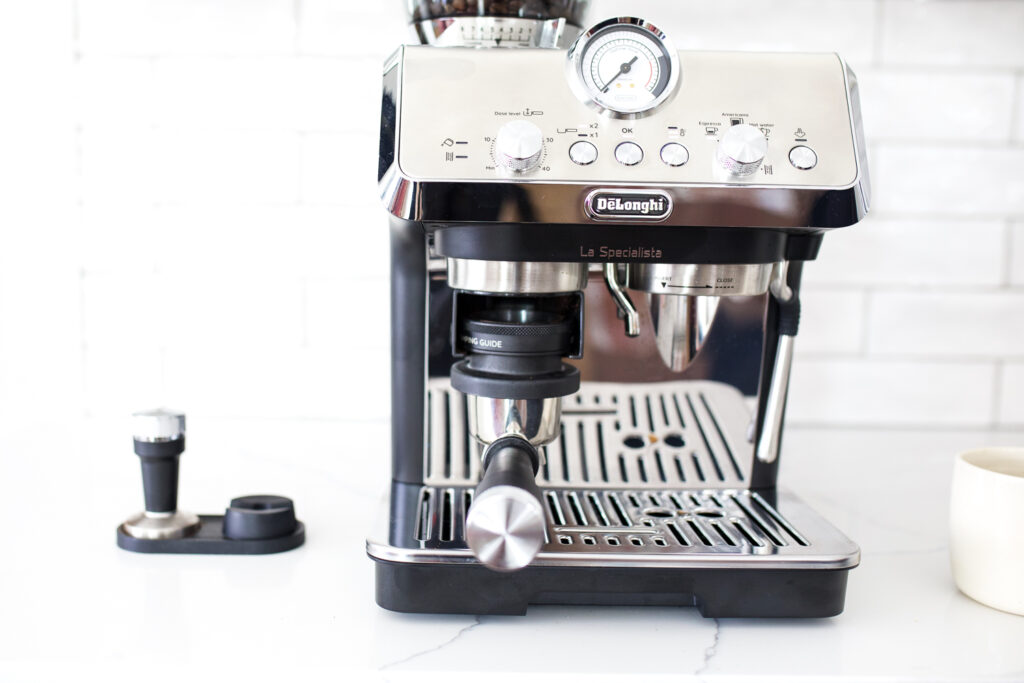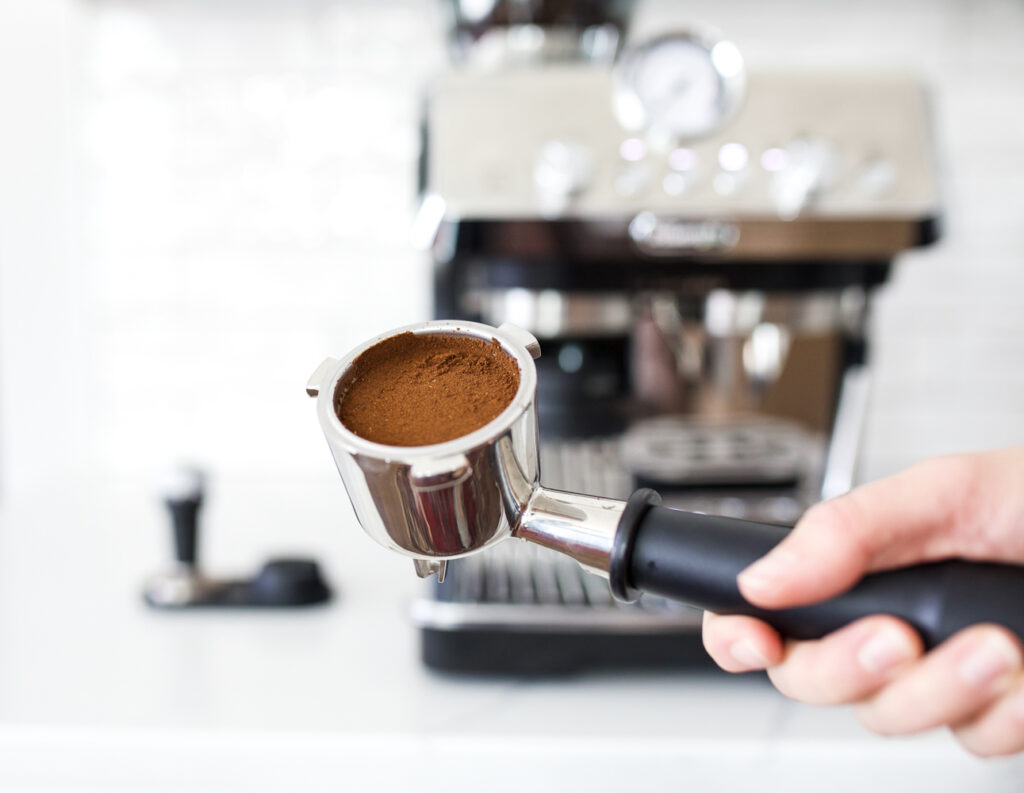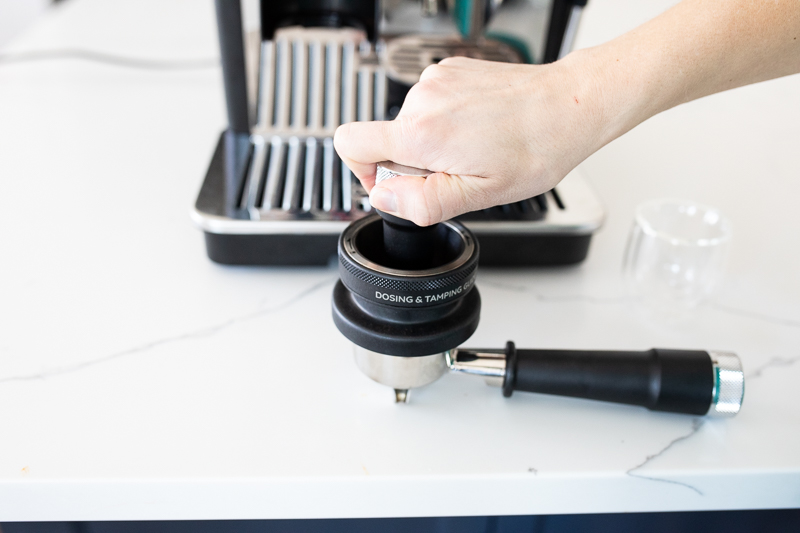Espresso machines can seem like a total mystery if you’ve never used one. There are usually a lot of buttons, knobs, and levers. It can be challenging to get started.
But, once you know the basics, it turns out that they are actually quite simple to understand and operate. The complex look of these machines is deceiving. One shot, double shot, triple shot? No problem!
In this article, I’ll describe the most essential espresso machine parts and their primary functions. These parts are universal among all espresso machines, including our favorite models.
I’ll also cover some core differences between automatic home models and manual commercial espresso machines!

Pump
The first thing to understand when it comes to espresso parts is the the pump. The pump is essentially the “heart” of the espresso machine.
To make proper shot of espresso, the machine has to apply atmospheric pressure to the coffee bed. An “atmosphere” is a unit of measure gauged by a barometer. Air exerts pressure, which changes depending on elevation within the earth’s atmosphere.
An espresso machine pump applies 9 bars of atmospheric pressure to the shot. High pressure is what makes espresso unique from any other brew method.
Pressure Gauge
A pressure gauge measures the atmospheric pressure applied to the coffee beans.
You can see the pressure gauge move when you’re pulling a shot. It looks different on different types of machines. On many espresso machines, it looks like a tiny speed gauge on the dashboard of a car.

Most of the time, you don’t have to pay attention to the pressure gauge of a machine. But if you are having problems pulling a single shot, this can be one place to look to diagnose potential issues.
Water Tank
At the risk of stating the obvious – every espresso machine needs a water source.
Home espresso machines often have built-in water reservoir you can manually refill. But many more advanced models are attached directly to a building’s plumbing system, so baristas don’t have to constantly restock water.
If you’re pulling A LOT of shots, having a direct water flow makes all the difference in the world. But if you only need to make a few drinks at a time, carting water from the sink isn’t a major inconvenience to keep the water level up.
However your water tank is connected, I’d recommend using filtered water to remove chemical additives like chlorine that you’ll find in most public tap water systems.
Boiler
The boiler does what it sounds like. It makes sure the water is hot enough for brewing and steaming.
Some espresso machines are “single boilers” while others are “dual boilers”, like most commercial machines. A lot of home espresso machines on the affordable end are single boilers. This means it uses a single boiler to send heat to both the steam wand, steam tip and the group head.
The limitation of a single boiler (without a heat exchanger) is that it can’t brew coffee and froth milk simultaneously. There is also an added wait time. Once you pull a shot, you must wait for the machine to adjust and heat to the proper temperature for milk steaming.
A dual boiler machine allows one boiler to heat water for the steam wand and a second boiler to heat water for the espresso.
The water temperature should be around 200 °F (93 °C) for espresso brewing.
Heat Exchanger
Espresso machines with single boilers (should, ideally) have what is called a heat exchanger.
A heat exchanger connects to its own water line in the machine’s pump. This line connects to a copper tube inside the boiler, where the “exchange” happens.
A heat exchanger creates a separate channel from the boiler to the group head so that the super hot water for the steam wand never makes contact with the coffee.
Group Head
The group head is the round part at the front of the machine where the portafilter plugs in and espresso comes out.
There are various types of group heads that all essentially do the same thing. But today’s most common type is a “saturated” group head.
A saturated group head contains water tubes that connect to the boiler.

When you brew a shot, that water keeps the group head hot so that you can pull a good shot. This is one reason why baristas release small bits of water from the group before they brew espresso, they are heating up the group head steam wand tip between shots.
Portafilter
The portafilter plays an important role in the machine, it’s the chariot for your espresso! It delivers and secures the coffee to the group head so you can pull an excellent espresso shot and is a key piece in the overall brewing process.

The portafilter is attached to a long handle, so you don’t have to burn your hand when you brew espresso. The base of the portafilter has tiny holes where the espresso is forced through and drips into your cup, it’s sometimes called the portafilter basket.
I’ve just explained a “bottomless” portafilter, which many baristas prefer. But you can also find a “spouted” portafilter design on many machines.
Spouted portafilters have small spouts attached to the bottom of the portafilter to control the exit of the espresso.
A bottomless portafilter will help you get a “read” on the shot as it is pouring and check for possible channeling or extraction issues. Spouted portafilters are not necessarily bad, but they make it harder to gauge the quality of your shot.
Tamp
The tamp is a small, oblong-shaped object with a flat base used to smush the coffee into the portafilter. Though this piece isn’t attached to the espresso machine, it’s one of the most distinct features that is vital to tamp coffee evenly and safely.
We need the coffee tamped flat to avoid channeling or poor extraction.
Channeling is when there are cracks in the coffee bed. The hot water can’t disburse equally across the coffee bed because it gets forced out through the cracks in the coffee bed. This leads to under-extraction and a less-than-tasty shot.

Because an espresso machine applies 9 bars of pressure to the coffee, you don’t have to put your whole body’s weight into the tamp. It’s also essential to keep your arm at a 90* angle as you tamp so you don’t get carpal tunnel or an achy elbow.
Steam Wand
You can use the steam wand to steam milk and craft delicious micro foam for cappuccinos and lattes. This specific part connects to a boiler inside the machine that heats water to boiling.
Steam wands usually have a removable tip with three holes at the base. Baristas make excellent use of partially submerging the holes under the milk’s surface to create foam and letting the excess from the end of the steam wand fall to the drip tray.
FAQ
A portafilter is a concave metal filter attached to a handle. The portafilter locks the grounds into the espresso machine group head. The group head is the last place the water reaches in the machine before making contact with the coffee bed.
An espresso is a drink, and it’s also a brew method. Espresso applies hot water and pressure to a small, concentrated dose of ground coffee. There are many kinds of coffee makers out there, but none of them use pressure in the same way. By comparison, an automatic coffee maker heats water and disperses that water over coffee grounds to make a perfect cup of coffee. It’s a drip system rather than a pressurized system. Espresso machines also require more regular maintenance than coffee makers, but at the end of the day there is no right way or best way to make a cup of coffee!
Quality espresso machines are expensive because they use durable, costly materials like stainless steel and brass. The intricate design of pressure and boiler systems also adds to the overall cost as well as machines that come in a variety of different sizes. There are some automatic espresso machines that are budget-friendly, but as modern machines get more complex, with options to “program” shots and add computer components, the price increases even more, which respective owners should keep in mind when shopping for upgraded models.
